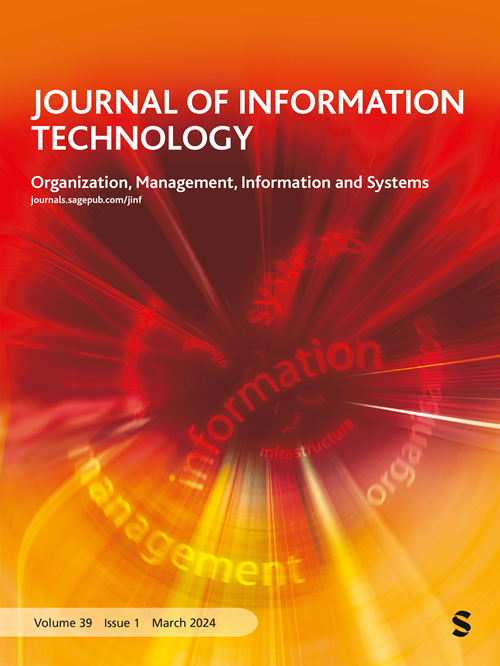以人为本的网络安全与网络犯罪之间的关系
IF 5.4
3区 管理学
Q1 COMPUTER SCIENCE, INFORMATION SYSTEMS
引用次数: 0
摘要
本研究旨在提出一个以人为本的网络安全模型及其与遏制津巴布韦商业银行网络犯罪的关系。无论使用何种网络安全技术(如防火墙、反间谍软件和杀毒软件),以人为中心的网络犯罪(如电子邮件网络钓鱼、身份盗用、黑客攻击和恶意软件)的影响都在不断增加。为了防止安全漏洞,应始终强调人的作用。本研究提出了津巴布韦商业银行以人为本的网络安全解决方案模型,以打击身份盗用行为。对项目框架进行了修改,从保护动机理论和常规活动理论出发,说明人的网络安全措施如何有效遏制网络犯罪。以人为中心的网络犯罪解决方案包括提高网络安全意识、高层管理支持和网络安全政策。收集到的数据使用 SPSS 23 和 Smart PLSVersion 3.2.8 进行部分列表结构方程建模分析。研究结果很有意思,提高意识、高层管理支持和网络安全政策等人为解决方案对身份盗用有一定的负面影响,R2 值为 0.64。人为结构模型的标准化均方根残差值为 0.08,表明模型拟合良好。研究结果表明,人的因素是银行机构成功实现网络安全的关键。本文章由计算机程序翻译,如有差异,请以英文原文为准。
The Relationship between Human-centric Cybersecurity and Cybercrime
The aim of this study is to propose a model of human-centric cybersecurity and its relationship tocurbing cybercrime in Zimbabwean commercial banks. The effects of human-centric cyber-crimes (e.g.email phishing, identity theft, hacking and malware) are increasing irrespective of the use of cyber securitytechniques (such as firewalls, antispyware and antivirus). In order to prevent security breaches, the role ofthe human element should always be emphasized. The study proposed a model of human-centric cybersecurity solutions in Zimbabwean commercial banks to counter identity theft. Item frameworks were modifiedto illustrate how human cyber security measures would effectively curb cybercrime from the theory ofprotection motivation and the theory of routine activity. Solutions to cybercrime centered on human beingsinclude raising aware- ness about cyber security, top management support and cyber security policies.Quantitative data collected through survey questionnaires which were distributed to 118 key informantsacross thirteen commercial banks in Zimbabwe. Gathered data were analyzed using SPSS 23 and Smart PLSVersion 3.2.8 for partial list structural equation modeling. The findings were interesting, the human solutionssuch as raising awareness, top management support, and cybersecurity policy indicated a negative andmoderate effect on identity theft, R2 value was of 0.64. The standardized root mean square residual value forthe human structural model was 0.08 indicating a good model fit. The findings show that the human factoris key for the successful cybersecurity of any banking institution.
求助全文
通过发布文献求助,成功后即可免费获取论文全文。
去求助
来源期刊

Journal of Information Technology
工程技术-计算机:信息系统
CiteScore
10.00
自引率
1.80%
发文量
19
审稿时长
>12 weeks
期刊介绍:
The aim of the Journal of Information Technology (JIT) is to provide academically robust papers, research, critical reviews and opinions on the organisational, social and management issues associated with significant information-based technologies. It is designed to be read by academics, scholars, advanced students, reflective practitioners, and those seeking an update on current experience and future prospects in relation to contemporary information and communications technology themes.
JIT focuses on new research addressing technology and the management of IT, including strategy, change, infrastructure, human resources, sourcing, system development and implementation, communications, technology developments, technology futures, national policies and standards. It also publishes articles that advance our understanding and application of research approaches and methods.
 求助内容:
求助内容: 应助结果提醒方式:
应助结果提醒方式:


